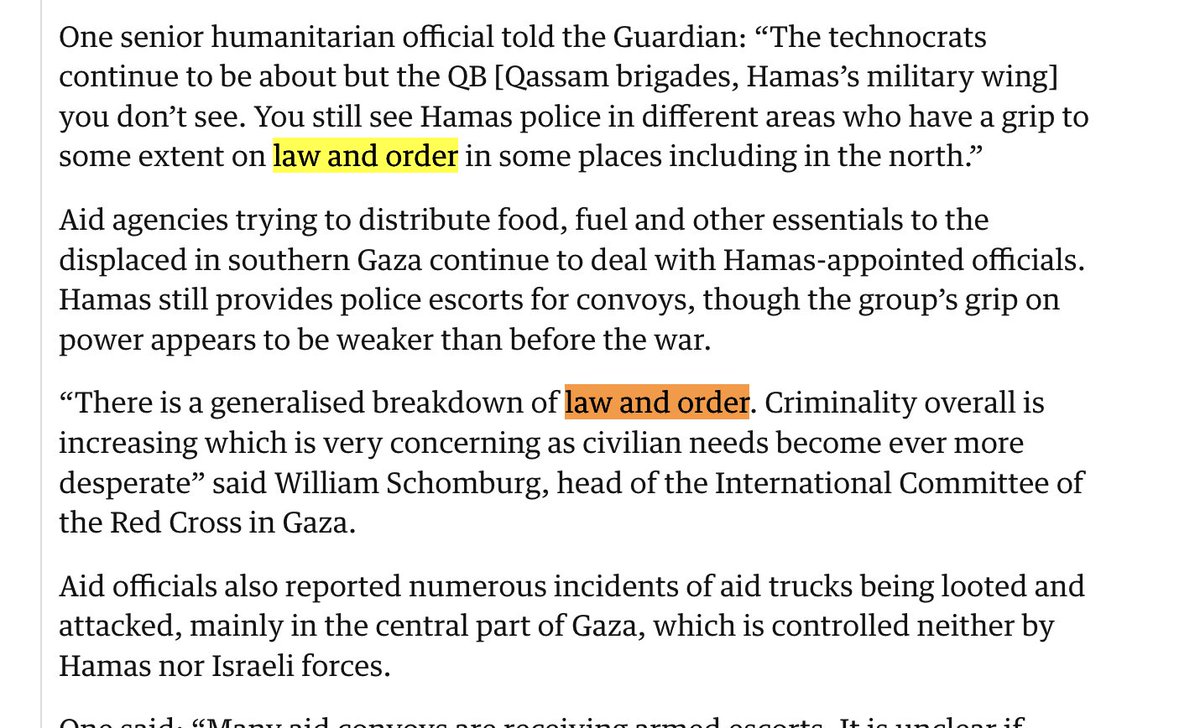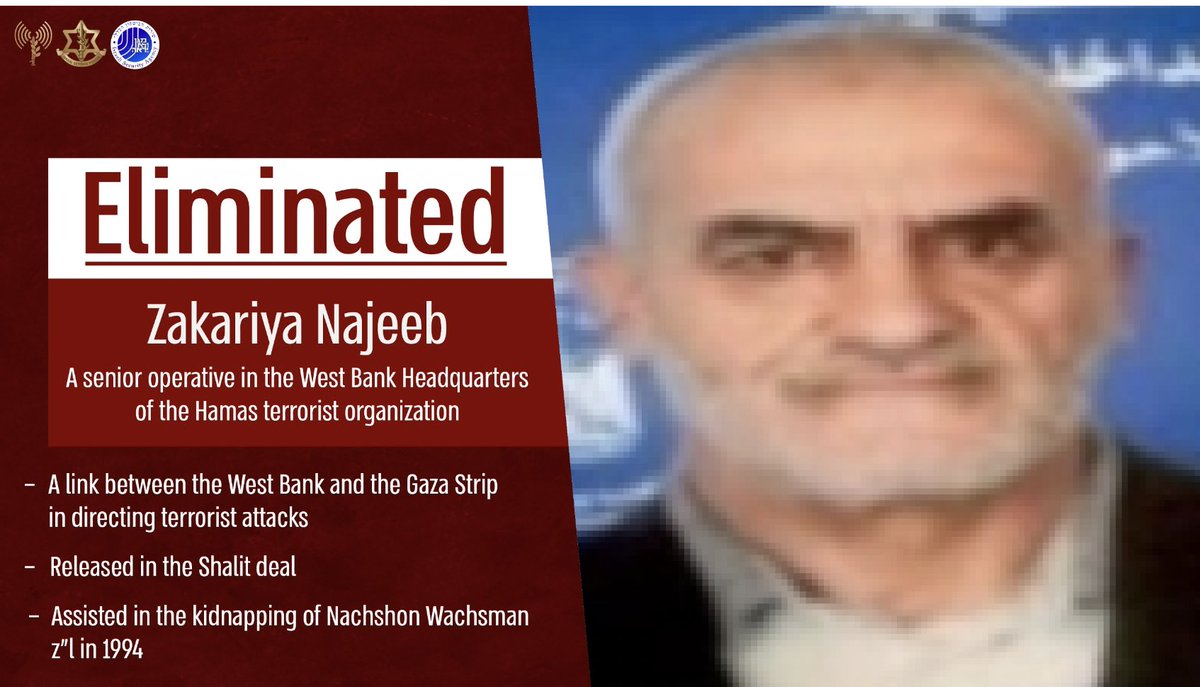The IDF has concluded an investigation into the targeting of three vehicles and killing seven aid workers with WCK (three of whom were security coordinators).
The findings still leave a few questions, I'll detail in the thread.
The conclusion says the brigade fire support commander of the sector will be dismissed, and the brigade chief of staff will also be dismissed. "Additionally, the brigade commander and the 162nd Division commander will be formally reprimanded. The IDF Chief of Staff decided to formally reprimand the commander of the Southern Command for his overall responsibility for the incident."
The findings still leave a few questions, I'll detail in the thread.
The conclusion says the brigade fire support commander of the sector will be dismissed, and the brigade chief of staff will also be dismissed. "Additionally, the brigade commander and the 162nd Division commander will be formally reprimanded. The IDF Chief of Staff decided to formally reprimand the commander of the Southern Command for his overall responsibility for the incident."

"The IDF takes seriously the grave incident that claimed the lives of seven innocent humanitarian aid workers. We express our deep sorrow for the loss and send our condolences to the families and the WCK organization. We consider the vital humanitarian activity of international aid organizations to be of utmost importance, and we will continue to work to coordinate and assist their activities, while ensuring their safety and safeguarding their lives."
The mistake seems to have begun when the vehicles were driving from an IDF controlled area into an area controlled by Hamas several miles south of the IDF newly-built pier...it was 22:28 in the evening. At this point a gunman boarded one of the aid trucks...not one of the three smaller vehicles. The vehicles were taking the trucks from the pier to a warehouse in Deir al-Balah
After the identification of the gunman boarding an aid truck, another gunman was seen as well. "After the vehicles left the warehouse where the aid had been unloaded, one of the commanders mistakenly assumed that the gunmen were located inside the accompanying vehicles and that these were Hamas terrorists."
This took place up to 23:06 in the evening.
This took place up to 23:06 in the evening.
Now this is where the tragedy begins. Three vehicles proceeded away from the hangar warehouse of Deir al-Balah and headed back to the coast road. The trucks had been left behind (apparently)...and therefore the gunmen had stayed with the trucks (because gunmen in Gaza claim to be guarding aid...a very problematic process that the international community seems to think is logical, but is in fact bizarre in the extreme).
POINT 1: So here it's worth flagging how grotesque it is that the whole aid process in Gaza always involves gunmen jumping onto trucks...apparently Hamas gunmen. It shows how the whole problem with the Gaza war in general...which is that because Israel refuses to control areas in Gaza...Israel continues to basically outsource control to others...and the "others" end up being Hamas usually. This creates a ridiculous cycle where Israel is fighting a six month war "against Hamas" but Hamas seems to always seemlessly control most of Gaza today (like 80%?) and has gunmen who systematically take control of aid convoys.
So the PRESENCE of gunmen on aid trucks is a systematic problem. It has not been addressed. And it seems there is a kind of "wink wink" between aid organizations, Hamas and the IDF about this "process"...but it is also a process that can easily turn deadly because of the war.
I assume the aid organizations don't contact the IDF liaison and say "ok now Hamas gunmen have boarded our convoy"...which means you have a lot of situations where the gunmen are intermixed with innocent people and use them as human shields. This sets up an incredibly bad process and it raises questions about the assessment of the security coordinators of these NGOs. I wouldn't want to be in a convoy with armed gunmen on some vehicles and innocents in the others...knowing drones are watching...because nothing is ever 100%...who wants that risk. But the Gaza war has forced people to take these ricks apparently. But it's also built into the international "culture" of Gaza...this acceptance of "gunmen" representing "law and order"...we've seen this in other articles at the Guardian, etc, where Hamas is portrayed by some international orgs as "law and order." theguardian.com/world/2024/jan…

POINT 2: The tragedy begins with misidentification...or more precisely the fact that it wasn't clear that the three smaller vehicles never had gunmen in them, the gunmen get on the trucks to control the trucks...and they stayed with them.
The clear question comes after the first strike on one vehicle at 23:09 in the evening, three minutes after it departed a hangar area of Deir al-Balah. It was on the coastal road. One would assume and hope that these groups liasison with the IDF and this route on the water on Rashid st is supposed to be a coordination zone. However, the vehicles enter the coordination zone, they are driving away from IDF forces (some 8 miles north) and it is here they are targeted, not in Deir al-Balah.
After the first strike, the humanitarians would have scrambled to get their colleagues from the first struck vehicle to the two remaining vehicles. The three security coordinators with them would have followed a standard operating procedure in this case. It was done quickly. It's clear how fast is was done because they had to transfer within about a minute and then keep driving south several hundred meters before the second strike at 23:11.
This is where the strikes stop making sense. If the strikes were supposed to target a Hamas gunman...it would seem now that anyway watching would note that there are no gunmen, no weapons being moved from vehicle A to B and then to C. Thats concerning, because why would the whole convoy be flagged as Hamas...when it's in an area for humanitarian coordination.
By this time it's too late, the seven people are now crammed into one vehicle apparently and they keep moving, once again transferring quickly from one to another, including any wounded. A minute later at 23:13 the final strike happens. We don't know who extricated them from the final strike, when they got to hospital...how they were treated. But I haven't seen any witness or survivors speaking out, so it seems the entire group is killed or badly wounded at that point. I guess we may find out more.
But again all seven, unarmed. Mistaken identification in the first instance, but it does raise questions about why there wasn't a way to check as they were moving from one vehicle to the next, to call off a strike. The whole talk about using more smart munitions, and better optics and also even AI and automatic target recognition and stuff, is that munitions can be called off at the last second, because the optics and everything are so good...so there is time to make better decisions. The operator has more information, not less.
But again all seven, unarmed. Mistaken identification in the first instance, but it does raise questions about why there wasn't a way to check as they were moving from one vehicle to the next, to call off a strike. The whole talk about using more smart munitions, and better optics and also even AI and automatic target recognition and stuff, is that munitions can be called off at the last second, because the optics and everything are so good...so there is time to make better decisions. The operator has more information, not less.
There's no time element here...the convoy is moving on an open road on the coast...nothing around it...the men aren't fleeing, they are profesionally moving from one car to the next...and the cars are proceeding in a coordination zone in the open...and so it would seem that after the first strike there's a lot of questions about why anyone proceeded with more without having a necessary discussion about possibly mistakes...it would seem that any system of strikes should always have within it a necessary question mark of "what if this is wrong, how and when do we call it off."
One assumes lessons will be learned. There is a book called 'The Kill Chain: Defending America in the Future of High-Tech Warfare'...and there is a lot of discussion about the US use of drones that looked at how drone strikes were carried out based on analysis of behavior...not necesarily always knowing that there were weapons present for instance...and due to this there are examples in the US drone wars from 2003-2014 or so where innocents were killed.
Any system that can misidentify something and put into action a series of attacks without stopping along the way to revisit the assumption, is going to lead to cases like this and too many deaths of unarmed civilians.
Any system that can misidentify something and put into action a series of attacks without stopping along the way to revisit the assumption, is going to lead to cases like this and too many deaths of unarmed civilians.
The issue here is that precision weapons and lots of information...actually can lead to more devestating results...than previous eras "mistakes" where for instance inaccurate artillery strikes were called in on a group that was misidentified. When accurate precision missions go wrong, they go wrong very badly.
The two lessons I think are, questioning the continued phenomenon of gunmen taking over aid trucks....and making sure that in any decision to carry out multiple strikes on the same target that there is still a question about the assumptions along the way as more information comes in regarding the target (i.e unarmed people fleeing from one vehicle to the next).
• • •
Missing some Tweet in this thread? You can try to
force a refresh






